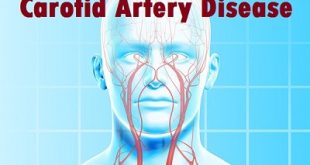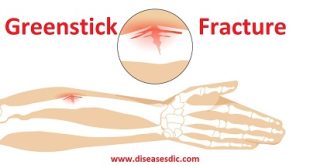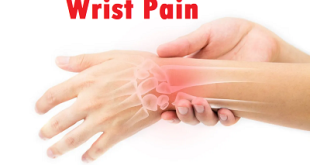Overview – Clavicle fracture
A clavicle fracture, also known as a broken collarbone, is a bone fracture of the clavicle. The clavicle is the bone that connects the breastplate (sternum) to the shoulder. It is a very solid bone that has a slight S-shape and can be easily seen in many people. It connects to the sternum at a joint with cartilage called the sternoclavicular joint. At the other end, the bone meets the shoulder area at a part of the shoulder blade (scapula) called the acromion. The joint at that end of the bone containing cartilage is called the acromioclavicular joint.
The collarbone acts as a strut to connect the sternum to the shoulder blade. Because of the critical location of the clavicle, any severe force on the shoulder, such as falling directly onto the shoulder or falling on an outstretched arm, transfers force to the clavicle. As a result, the collarbone is one of the most commonly broken bones in the body.
Clavicle anatomy
The clavicle is located between the ribcage (sternum) and the shoulder blade (scapula). It is the bone that connects the arm to the body. The clavicle lies above several important nerves and blood vessels. However, these vital structures are rarely injured when a fracture occurs.
Anatomy of clavicle
The clavicle, commonly called the “collar bone”, is a critical component of the shoulder girdle. The upper limb is indirectly attached to the axial skeleton through the clavicle. The clavicle is a strut-like bone in the shape of a shallow letter ‘S’ and lies transversely on the cranial end and ventral side of the rib cage. The clavicle articulates with two bones, the sternum, and the scapula. The medial end of the clavicle expands into an ovoid and articulates with the manubrium. The lateral end of the clavicle flattens craniocaudally and articulates with the acromion of the scapula.
Collar bone Anatomy
The clavicle has a synovial joint at each end. There is an articular disc at its sternoclavicular joint. At the articulation with the scapula, it is bound tightly to the acromion with ligaments that cross the synovial joint. The cranial surface of the clavicle is relatively smooth. The caudal surface of the clavicle presents a conoid tubercle which is the attachment of the conoid ligament, which binds the clavicle to the coracoid process of the scapula.
Types – Clavicle fracture
Usually, clavicle fractures are separated into three types of injuries depending on the location of the fracture:
Mid-Shaft Clavicle Fractures (75%)
The most common type of clavicle fracture is in the central third of the bone. These injuries can be a simple crack in the bone or badly displaced. Particular concerns occur when there are multiple breaks in the bone (segmental fractures), significant displacement (separation), or shortening of the length of the bone.
Distal Clavicle Fractures (20%)
Distal clavicle fractures occur in close proximity to the end of the collarbone at the shoulder joint. This part of the shoulder is called the acromioclavicular (AC) joint, and distal clavicle fractures often have similar treatment considerations as an AC joint injury.
Medial Clavicle Fractures (5%)
Medial clavicle fractures are much less common and often have a relationship to injury to the sternoclavicular joint. One of the last growth plates to close in the body is at the medial end of the clavicle, and therefore, growth plate fractures of the clavicle can be seen into the late teens and early twenties.
Risk factors of Clavicle fracture
Common risk factors associated with Clavicle Fractures include:
- Elderly individuals have a higher risk, due to decreasing strength/density of bones
- Children and adolescents, due to underdeveloped bones and higher physical activity involvement/participation rate in sports
- Participation in any rough or high-impact sport
- High birth weight infants
Clavicle fracture – causes
Clavicle Fractures may be caused by:
- An athletic event resulting in a direct hit or fall.
- Sports-related clavicle fractures are commonly seen in children and young adults. Caution is advised when playing contact sports including football, rugby, and hockey and when participating in “extreme” sports where falls can happen such as biking and skateboarding.
- A fall on the shoulder or an extended arm
- A direct hit to the shoulder in a motor vehicle collision
- Falling on the shoulder is the usual cause of clavicle fractures
Clavicle fracture – symptoms
- A broken collarbone most often causes immediate pain in the area of the fracture.
- Some people report hearing a snapping sound.
- Most people tend to hold their arm close to their body and support it with their other hand. This avoids movement of the shoulder which would aggravate the pain. Despite the pain, some people, particularly younger athletes, can have a surprising range of motion of their arms following a broken collarbone.
- The shoulder of the affected side is usually slumped downward and forward due to gravity.
- If the clavicle is gently touched along its length, pain is usually greatest at one point, locating the break. Often a crunching feeling is noted over the break, known as crepitus.
- The skin over the break often bulges outward and can be discolored a reddish-purple, indicating an early bruise.
Tenting of skin over clavicle fracture
Complications of Clavicle fracture
Most broken collarbones heal without difficulty. Complications, when they occur, might includes
Nerve or blood vessel injury: The jagged ends of a broken collarbone may injure nearby nerves and blood vessels. Seek immediate medical attention if you notice numbness or coldness in your arm or hand.
Poor or delayed healing: A severely broken collarbone might heal slowly or incompletely. Poor union of the bones during healing can shorten the bone.
A lump in the bone: As part of the healing process, the place where the bone knits together forms a bony lump. This lump is easy to see because it’s close to the skin. Most lumps disappear over time, but some are permanent.
Osteoarthritis: A fracture that involves the joints that connect your collarbone to your shoulder blade or your breastbone might increase your risk of eventually developing arthritis in that joint.
Diagnosis and Test
Physical Examination
In a clavicle fracture, there is usually an obvious deformity, or “bump,” at the fracture site. Gentle pressure over the break will bring about pain. Although it is rare for a bone fragment to break through the skin, it may push the skin into a “tent” formation.
During the physical examination, a dropped shoulder on the affected side, swelling, and hematoma at the middle third of the clavicle are usually observed. Often the fracture elements are palpable. Assessment of possible skin compromise and neurovascular status is important. In addition to the physical assessment, radiological assessment is part of the diagnostic workup.
A careful examination will determine the site of the injury, ensure that the fracture fragments have not pierced the skin and ensure that no blood vessels or nerves are damaged.
- X-rays are usually all that is required to make the diagnosis and help decide on the best form of treatment.
- Occasionally a CT scan may be helpful but usually only to assess for healing later in the management of this injury.
X-ray image of clavicle fracture
Treatment of Clavicle fracture
Use a Sling
Many broken collarbones will end up healing on their own. For those who don’t need surgery, you can use a sling to prevent your shoulder and arm from moving while the bone is in the healing process. Adults will need to wear the sling for a few days up to one week, while children might need to wear one for as long as three to four weeks.
Exercises
Begin simple mobility exercises 7-10 days following fracture, under the guidance of your therapist. Move on to strengthening exercises if they don’t cause pain when your mobility has improved. If you begin the regime too soon, you could end up with a broken collarbone that doesn’t heal properly, so make sure to get approval before engaging in an exercise program. For those who are active, avoid playing sports or engaging in other activities until your shoulder feels strong and you can freely move it.
Anti-Inflammatory Medication
To help alleviate pain and inflammation, an anti-inflammatory might help relieve some of the pain. The hospital will direct you on its use.
Surgery
Surgery might be required for severe breaks. When the ends of the broken bone don’t line up properly with each other, surgery is inevitable. The bone is pinned or plated to attach the ends together.
Prevention of clavicle fracture
Since the collarbone fractures happen suddenly and unexpectedly, it can be hard to prevent them. But can decrease the risk of occurrence in the following ways:
- When playing contact sports, wear all the recommended protective gear and learn the proper techniques for your sport.
- Keep your bones strong by eating a well-balanced diet. Be sure to eat lots of vegetables and foods that are rich in calcium and vitamin D to help build strong bones.
- Do strength training and stretching to build strong, flexible muscles. Muscles that are strong and flexible will help support your bones better and keep you agile and less likely to experience a hard fall. A proper warm-up, including dynamic stretching exercises, can help your muscles perform at their best during play.
- Wear well-fitting, supportive footwear that’s right for your sport.
 Diseases Treatments Dictionary This is complete solution to read all diseases treatments Which covers Prevention, Causes, Symptoms, Medical Terms, Drugs, Prescription, Natural Remedies with cures and Treatments. Most of the common diseases were listed in names, split with categories.
Diseases Treatments Dictionary This is complete solution to read all diseases treatments Which covers Prevention, Causes, Symptoms, Medical Terms, Drugs, Prescription, Natural Remedies with cures and Treatments. Most of the common diseases were listed in names, split with categories.








Thanks,Its a informative article,Please add more in exercise as Breathing exercise, Strengthening exercise of area around the clavicle,Shoulder exercises.
Thank you we will work on your feedbacks.
Thanks you for the information;
I had had a clavicle fracture some time in the year 2009 from a soccer pitch due to serious and direct fall on my shoulder, so I was rushed to the hospital were I was operated and was told they used “metal plating and a screw “though I don’t know the right name to call it, I am not in a medical line. I still feel sharp pains when ever I touch the part of the affected shoulder though I don’t have any other challenges with using the hand. What do I do please?
Please consult an orthopedic doctor.